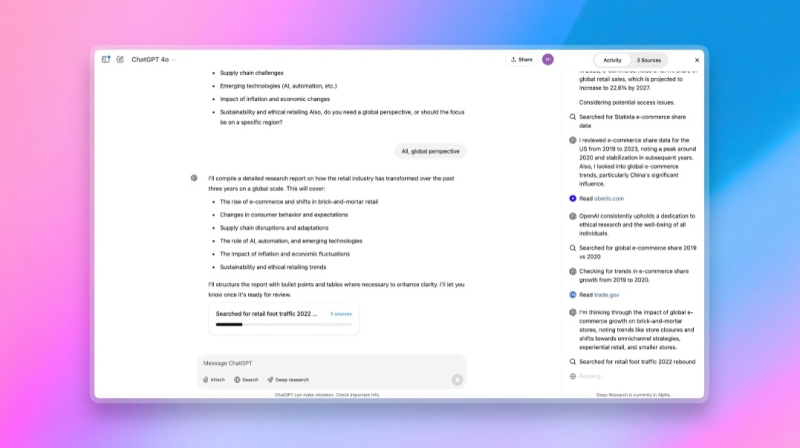Openai has announced a new function for its ChatGPT AI Bot, which will allow the algorithm to conduct “deep research” based on the user request. We are talking about the Deep Research tool, the basis for which the large language model Openai O3 has not yet been released into the masses.

Image source: OpenAI
The description of the new function says that it can work autonomously, “planning and performing a multi -stage path of searching for the necessary data, returning back and responding to the emergence of new information online, where it is required.” Simply put, the Deep Research function is not easy to answer the question set by the user, but analyzes and generalizes data from various sources, thus forming a detailed report on a given topic.
In the process of DEEP Research, a brief description of the process, as well as quotes and other reference information, is displayed in the right side of the screen. Users can use a new function by setting a text request, as well as by uploading an image or additional files, for example, documents in PDF format or electric tables. Due to this, the algorithm will receive more context, after which it will take from 5 to 30 minutes to prepare a detailed report according to the results of the work done. Subsequently, the chat boot will be able to add images and diagrams to its answers.

Openai notes that the Deep Research function can hallucinate, i.e. invent non -existent facts. In addition, the algorithm hardly distinguishes information from authoritative sources from rumors and knowingly false data. Despite this, Openai is confident in the prospects of its development, noting that Deep Research can function at the analyst level.
As for the availability of a new function, users who pay for $ 200 per month will be able to execute up to 100 requests per month to the CHATGPT deep study tool. Those who pay $ 20 per month, the company guarantees “limited access”.